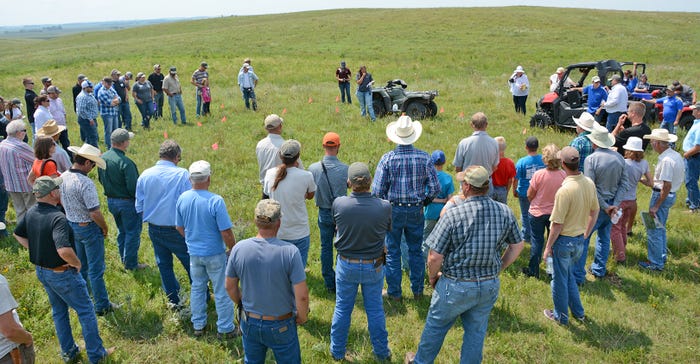September 4, 2017

Blue Bell Ranch, Clear Lake, S.D., has been described as a jewel of the Prairie Coteau. It’s one of the largest remnants of the tallgrass prairie in northeast South Dakota. Operated Herb and Beverly Hamann; their son Breck; and daughter, Arla Poindexter, the Blue Bell Ranch received the 2017 South Dakota Leopold Conservation Award.
Six gems of ranch and conservation management you can glean from a visit to the Blue Bell are:
1: Humility as a management principle. “Not social humility,” says Pete Bauman, South Dakota State University Extension range specialist, “but humility about what you know.” Bauman nominated the Hamanns for the Leopold award. The Hamanns don’t believe they know more than Mother Nature about resource and cow management. They try to follow Mother Nature, not impose a system on her. “Herb and Bev made a conscious decision to care … about the health of the range. All other decisions — from the way they raised their family to the decision to protect the ranch with easements — flowed from that singular first major decision.”
2: A new definition of sustainability. “Farms and ranches are rarely just in a mode of sustaining,” Bauman says. “They are either getting better or getting worse. The Blue Bell seems to be always getting better.”
3: Grazing their way. The Hamanns don’t copy other ranches’ grazing rotations, but they understand well the concepts of rotation, rest, winter grazing and not overstocking the range. Their husbandry is evidenced in the health of their plant communities, which are as good as any nature preserve.
4: May calving benefits. The Hamanns used to calve in February and March. Now, they calve their entire herd, including heifers and younger cows, in May. Not only does later calving reduce labor needs, but it also ensures improved calf survival by avoiding harsh early-spring weather. As an added benefit of working with nature, the Blue Bell’s warm-season grass pastures now provide excellent protection and cover during the May calving season.
5: Conservation on their own. Most of the Hamanns’ projects — whether a simple cross fence, water project or grass planting — were done without public or private cost-sharing just because, as Herb Hamann says, it was “the right thing to do.” However, the Hamanns value advice and relationships with conservation experts. They have worked extensively with public and private conservation specialists. Much of the ranch is enrolled in U.S. Fish and Wildlife Service perpetual conservation easements.
6: First choice is biological control. The Blue Bell was one of the first large ranches in South Dakota to use beetles to reduce leafy spurge. In 2012, the Hamanns used prescribed burns for the first time to increase native grass stands in pastures. “It’s really increased the native grass stands,” Arla says.
You May Also Like




